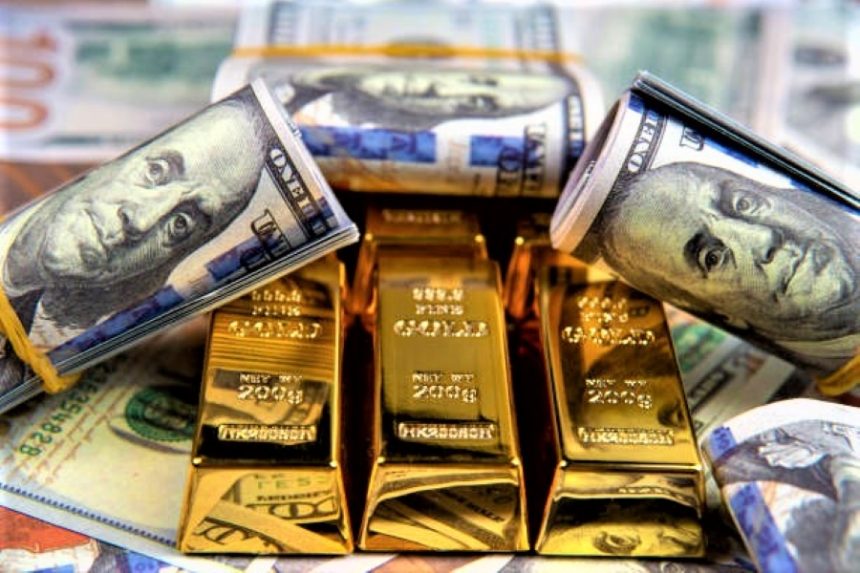Gold Reclaims $3,260 Trade Hopes Fuel Intraday Rebound Despite Weekly Decline.
Overview
Gold (XAUUSD) managed to stage an impressive intraday rebound on Friday, reclaiming the $3,260 level after suffering three consecutive days of losses earlier in the week. Despite the yellow metal closing the week in negative territory, this bounce comes as markets digest potential geopolitical shifts — particularly the possibility of renewed trade talks between the United States and China.
The news flow surrounding tariffs and international debt dynamics played a critical role in shaping gold’s weekly performance. While easing trade tensions typically undermine gold’s appeal as a safe-haven asset, markets remain wary of significant tail risks, especially as global economic powerhouses like Japan and China leverage their substantial holdings of U.S. Treasury debt in negotiations with Washington.
Gold Bounce: A Pause or a Pivot?
At the time of writing, gold is trading near $3,260, up from recent lows earlier this week. This intraday gain marks a notable shift in sentiment, largely attributed to reports suggesting that China may be willing to engage with the United States in discussions over tariffs. According to Bloomberg, China’s Commerce Ministry acknowledged messages from U.S. officials expressing interest in resuming talks. The ministry stated that “China is currently evaluating this,” signaling a possible thaw in tense trade relations.
This headline-driven recovery in gold underscores the metal’s sensitivity to geopolitical narratives. In the earlier part of the week, a stream of dovish signals around tariffs had driven investors toward risk assets, pulling gold lower. However, markets seem far from convinced that the geopolitical backdrop has fundamentally shifted, especially with looming uncertainties over how negotiations may evolve.
Tail Risks Still Lurk: Japan’s Bold Signal
Perhaps more significant than the China headline was a rare and bold statement from Japan’s Finance Minister Katsunobu Kato. On Friday, Kato highlighted Japan’s status as the largest foreign holder of U.S. Treasury debt — a staggering $1.1259 trillion — and hinted that this position could be used as leverage in trade negotiations with Washington.
This assertion underscores a powerful undercurrent in international relations: financial diplomacy. While China ranks second in terms of U.S. debt holdings with $784.3 billion, its potential to influence American policy through economic means remains substantial. The total US. national debt stands at approximately $26 trillion, and any shifts in foreign demand for Treasury securities could have significant ramifications for bond yields, monetary policy, and the US. dollar — all of which directly influence gold pricing.
If countries like Japan or China even suggest rebalancing their reserves away from U.S. assets, markets could interpret this as a sign of deepening tensions, re-igniting demand for gold as a hedge.
Fed Policy Expectations Hinge on NFP
Another critical variable influencing gold’s short-term path is U.S. labor market data. The upcoming Nonfarm Payrolls (NFP) report, due at 12:30 GMT, is likely to be a pivotal event. The consensus estimate calls for a gain of 130,000 jobs, down sharply from the previous month’s reading of 228,000.
Should the data significantly miss expectations, it would increase the likelihood of a Federal Reserve rate cut as early as June. According to the CME FedWatch Tool, current market pricing indicates just a 6.4% chance of a rate cut in May, with June showing a 57.8% probability. A soft NFP print could dramatically shift these odds, injecting fresh volatility into gold markets.
Conversely, a robust jobs report could deflate rate-cut bets, boost Treasury yields, and strengthen the dollar — all headwinds for gold. In this sense, the metal’s rebound ahead of the data release could be seen as a strategic positioning move by traders bracing for potential downside surprises.
Market Movers: Key Developments This Week
1. Trade Talk Whispers Between China and the U.S.
China’s Commerce Ministry indicated that Washington has reached out through backchannels to restart trade negotiations. This development, while still tentative, has reduced some geopolitical stress in markets, encouraging a short-term pullback in gold prices.
2. Japan Wields Debt Leverage
Japan’s open statement about using its $1.1259 trillion in U.S. debt as a negotiation tool adds a new layer of complexity to trade diplomacy. Investors are now considering the implications of financial assets being weaponized, which keeps safe-haven demand for gold alive despite bearish pressures.
3. National Economic Council Hints at Progress
Kevin Hassett, Director of the National Economic Council, mentioned that progress is being made on the tariff front and hinted at possible updates by the end of Friday. These kinds of comments offer fleeting optimism to equity markets while dampening the urgency to hold gold.
4. Gold Road Resources Suspends Trading
In an unexpected twist, shares of Australian miner Gold Road Resources Ltd. were suspended in Sydney amid rumors of a takeover. The miner cited “media speculation regarding a potential change of control transaction” and plans to resume trading on May 6, unless further announcements are made. This corporate event, while isolated, reflects increased M&A activity in the gold sector often viewed as a signal of long-term confidence in the commodity.
Technical Analysis: Can Gold Sustain $3,260?
From a technical perspective, gold’s reclaiming of the $3,260 level is notable, but it must close above this threshold on a weekly basis to confirm a broader bullish resumption. Key support sits near the $3,240 zone the base of the recent downtrend while resistance looms around $3,280, where selling pressure re-emerged earlier in April.
Momentum indicators such as the Relative Strength Index (RSI) have bounced from near-oversold territory, suggesting some short-term relief. However, the medium-term picture remains murky until clearer macro catalysts, such as the NFP and Fed communications, offer direction.
Outlook: Fed, Trade Talks, and Market Sentiment
Looking ahead, gold’s trajectory will likely be determine by a combination of Fed rate expectations, geopolitical clarity, and broader risk sentiment. If trade talks between China and the U.S. evolve into formal negotiations, the initial response may be bearish for gold. However, any breakdown or prolonged uncertainty in these talks could quickly revive demand for safe-haven assets.
Additionally, if the Federal Reserve shifts toward a more dovish posture following weak economic data, the U.S. dollar could weaken a traditionally supportive environment for gold prices.
With so many moving parts, traders should brace for heightened volatility in the coming sessions.
[faq-schema id=”39495″]









